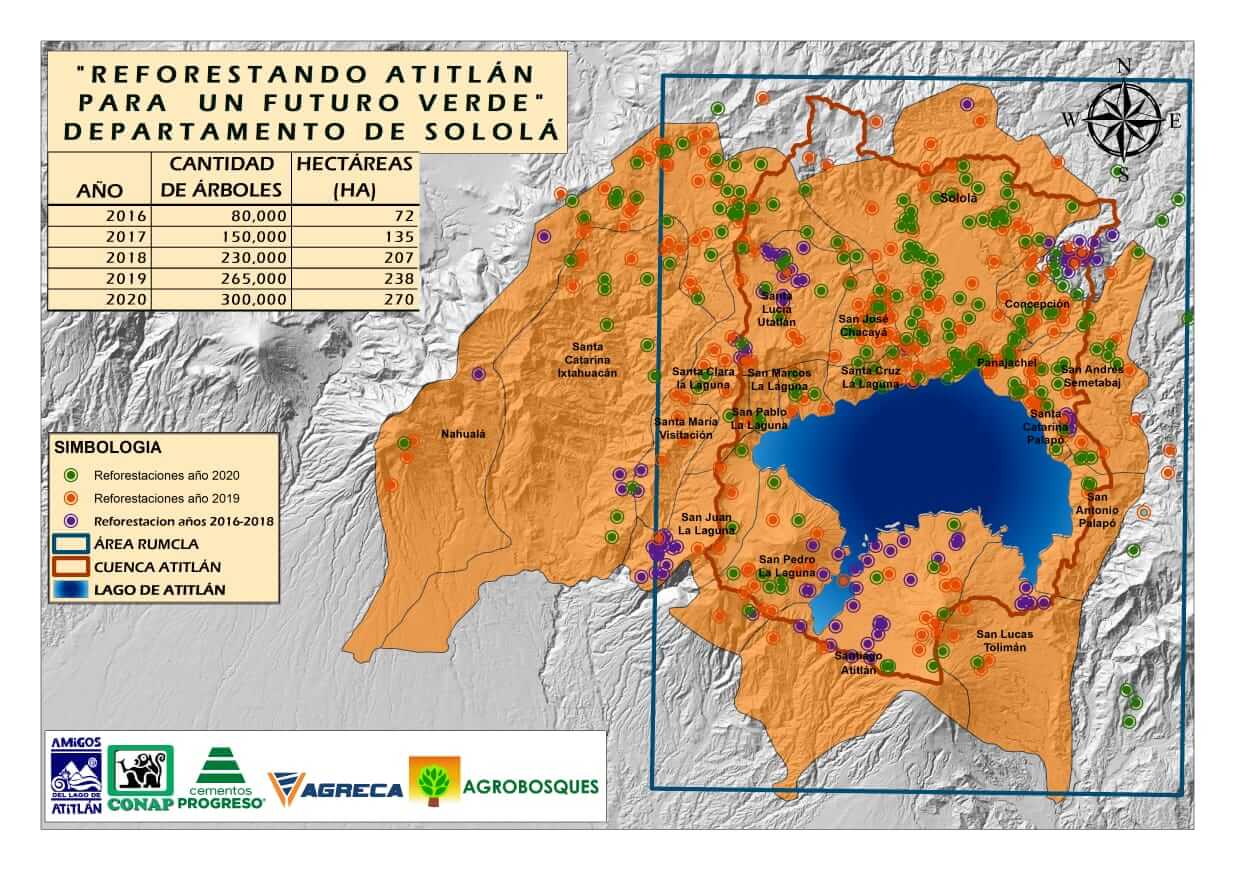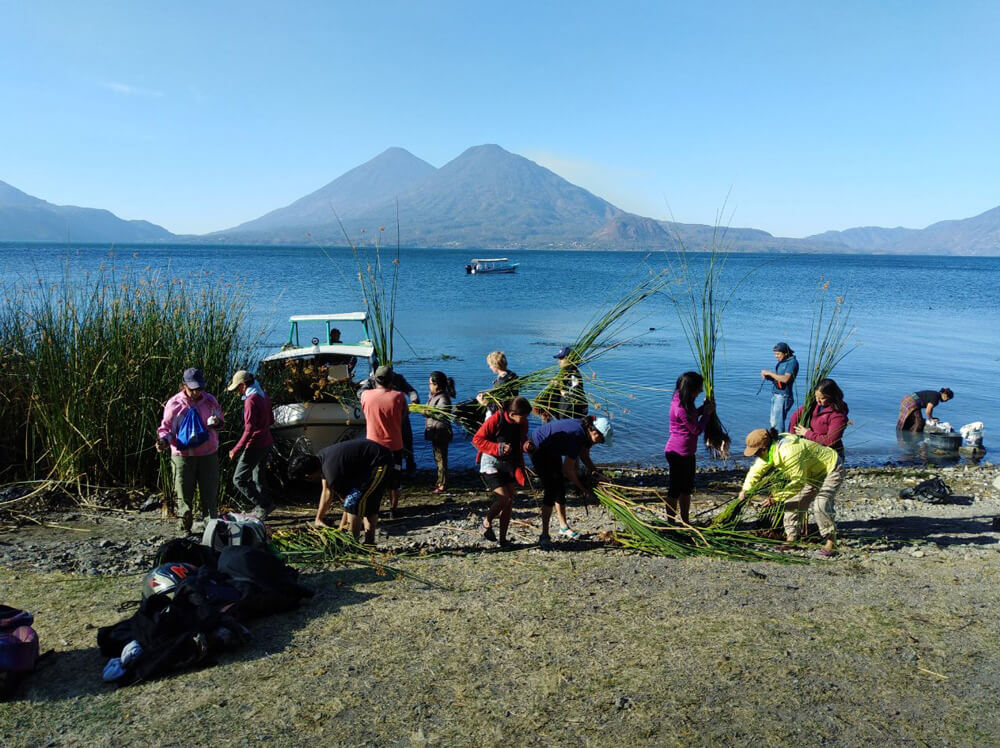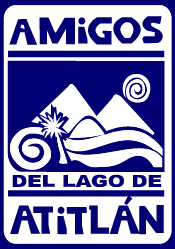Conservation and reforestation
Reforestation for a Greener Future
“Reforesting Atitlán for a Green Future” is a campaign seeking conservation and reforestation for protected areas in the department of Sololá by planting trees. It focuses on planting high-yield species (cypress, pine, and aliso) in hydric recharge zones, as well as in areas affected by forest fires.

Over a Million Trees
Since 2016 until today, more than a million trees have been planted and the monitoring of the plantings gives us the result of an average of 69% sticking.

United Efforts Achieve Better Results
In their efforts to face the effects of deforestation, in the past few years, both CONAP and the Association of Friends have put diverse actions into practice for the purpose of achieving sustainable development in the Lake Basin. We hope to promote conservation and restoration of natural resources and, at the same time, motivate communities to benefit from them.
For 2021, Reforesting Atitlan seeks to increase forest coverage in the municipal districts of the Lake Atitlan Basin and the RUMCLA /Multiple Use Reserve of the Lake Atitlan Basin


10,000 Meters Of Tul
Friends of the Lake actively participates in the planting of tul reed. In past years, we planted almost 10,000 linear meters of tul along the shores of the Lake, in coordination with Conap, Amsclae, Marn, and volunteers.
What is Tul?
Two types of tul or reed have been identified on Lake Atitlan. The first is Schoenoplectus californicus, commonly known as male tul or tul macho. It is used to produce handmade crafts such as mats and fans. The second is Typha domingensis, known as female tul or tul hembra, used mainly to tie up fresh water crabs.
Tul is a local plant found along the shores of the Lake and it possesses qualities which decrease contamination, since its roots filter water naturally. Besides giving oxygen back to the Lake, tul provides ecosystems to numerous aquatic species and migratory birds.


Importance of Tul
Its controlled cultivation helps diminish erosion on the beaches. Furthermore, it represents a living barrier for capturing garbage, when solid waste is caught within its stems, thus facilitating pickup. One of its most important features is natural filtration that removes phosphorus, nitrogen, and other nutrients left behind from soaps and chemical fertilizer that feed cyanobacteria.
A Green Future
We firmly believe that conservation and reforestation are going to change the future of Lake Atitlan and, most importantly, the quality of life for those depending on it.


